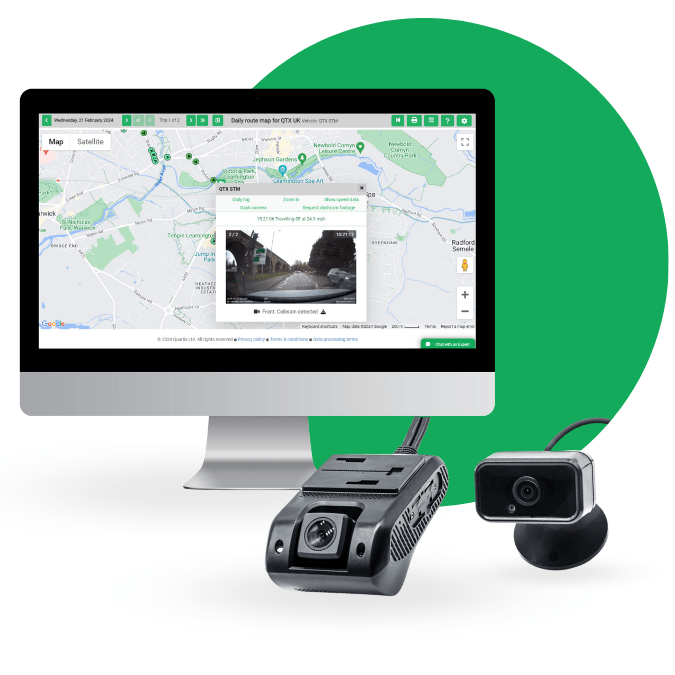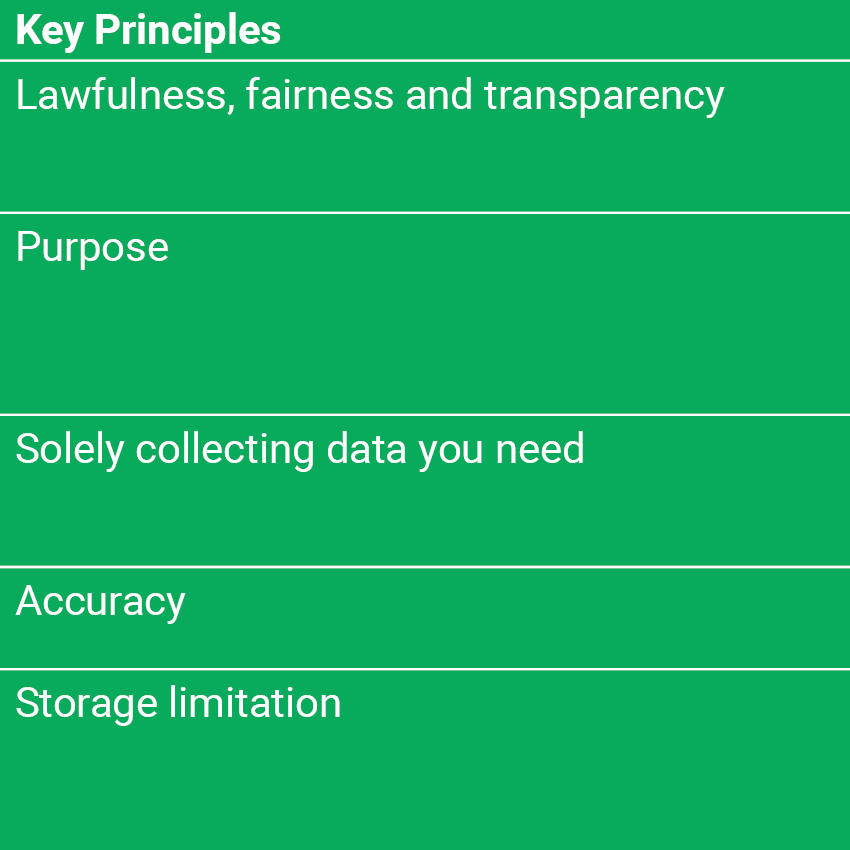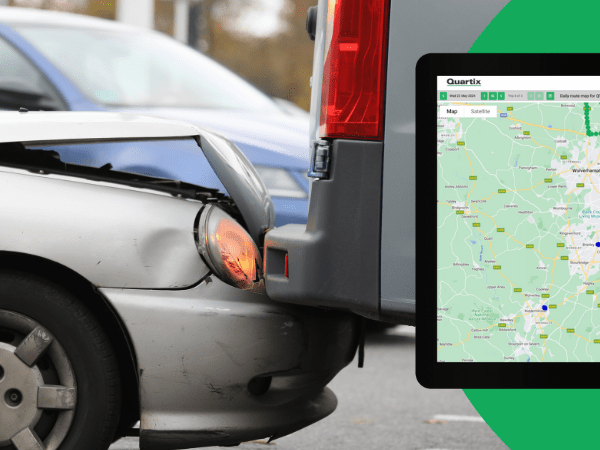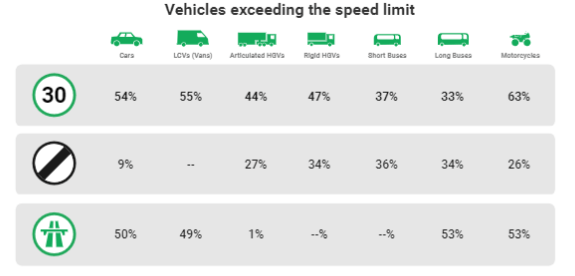See for yourself how Quartix works with our fully interactive real-time demo.
While many companies enforce strict policies warning staff against using handheld devices when driving, taking hands-free calls is often accepted, and even encouraged, as a safer alternative. However, research indicates that hands-free phone use can be just as distracting and dangerous as using handheld devices when we’re behind the wheel.
Are Hands-Free Calls As Dangerous as Handheld?
Professor Gemma Briggs of The Open University shares her research on driving while participating in a hands-free phone call.
“The human brain isn’t like a computer… What we do is shift between two tasks, and there’s a momentary lag called a resumption lag when we shift back to the first task.”
This cognitive distraction, known as “inattentional blindness,” means drivers may fail to notice hazards directly in their line of sight. “In some of our laboratory studies we’ve presented a hazard directly where someone is looking – and we know they are looking at it because we’ve got an eye tracker on them – but they fail to see it,” says Briggs.
The Open University also conducted a study involving 470 police officers from England and Wales, suggesting that hands-free conversations cause significant cognitive distraction, impairing reaction times and hazard awareness. After participating, 88% of officers reported a shift in perspective, acknowledging the risks of all mobile phone use while driving, not just hand-held. Despite this, the law allows hands-free device use when driving, reinforcing a dangerous misconception: that hands-free means risk-free.
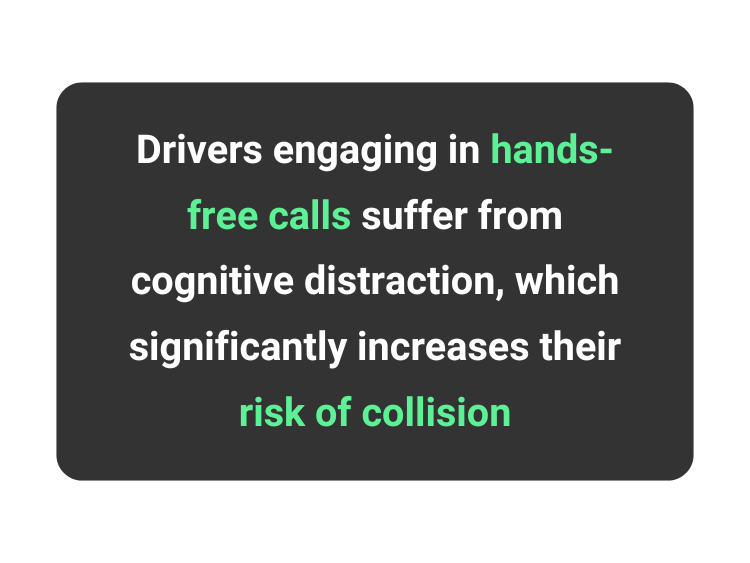
The reality is that drivers engaging in hands-free calls suffer from cognitive distraction – their minds are split between the road and the phone conversation. This impairs reaction times, reduces hazard awareness, and significantly increases risk of collision.
The Laws Around Mobile Phone Use When Driving
In the UK, it’s illegal to hold and use a phone or similar device while driving, even when stopped at traffic lights or queuing in traffic. Breaking this law can result in six penalty points and a £200 fine, and drivers who passed their driving test in the previous two years risk losing their licence. A further three penalty points can be dealt if the device was obscuring the view of the road or if the driver exhibited poor control of their vehicle. In extreme cases, a driver might be taken to court and be banned from driving, with a fines of up to £1,000 (that’s £2,500 if driving a lorry or bus).
However, drivers can utilise devices with hands-free access, such as bluetooth headsets or voice commands, provided they do not hold them during use and ensure the devices do not obstruct their view. But police can stop you if you do not have full control of your vehicle; and this can result in prosecution.
If you are involved in a collision, your phone data can confirm you were in a phone call at the time of impact, and regardless of whether you took the call hands-free, this can suggest driving without due care and attention.
How Does Hands-Free Mobile Use Impact Your Business?
For businesses with driving-for-work policies, allowing hands-free calls may seem like a productivity boost, but it puts employees, and other road users, at unnecessary risk. Drivers engaged in hands-free conversations experience divided attention, impairing their reaction times and hazard awareness. This not only jeopardises their, and other’s, safety but also exposes your company to potential accidents, legal liabilities, and reputational damage.
Prioritising your company drivers’ undivided attention to driving tasks is essential for ensuring safety on the roads, and many businesses rule against hands-free mobile phone use in their driving for work policies.
Put Your Attention to the Test – Video Exercise
To understand just how distracting hands-free phone use can be, take part in this simple exercise produced by the Open University.
- Watch a short driving video – The video will simulate a typical road journey with hazards appearing along the way.
- Listen to a conversation – During the video, a conversation will play. Your task is to listen and remember key details while still paying attention to the road hazards.
- Answer two questions at the end:
- What hazards did you notice on the road?
- What details can you recall from the conversation?
Many people struggle to recall both accurately, showing how divided attention impacts our ability.
What Do Professional Drivers Think About Hands-Free Calls?
The Kier Foundation, in collaboration with Nottingham Trent University, conducted a project focusing on professional drivers’ attitudes toward hands-free phone use. The study uncovered that many drivers believe hands-free use is safe because it is legal, leading to breaches of zero-tolerance policies. To address this, a myth-busting video was produced, aiming to challenge these misconceptions, change behaviour, and reduce distraction-based collisions among fleet drivers.
See also our thoughts on why legal speed limits do not always equal safe speed limits.
Proactive Measures for Fleet Safety
If you found this evidence compelling and want to mitigate the risks of hands-free phone use during your business trips, consider the following actions:
- Implement a comprehensive mobile phone policy: Discourage all mobile phone use while driving, including hands-free devices.
- Educate your staff: Share research findings on the dangers of distracted driving. For instance, you can share the video above that debunks myths surrounding hands-free safety.
- Promote safe communication practices: Encourage drivers to safely park up before making or taking calls.
- Lead by example: Ensure management refrains from contacting drivers during known travel times.
A Wider Conversation on Road Safety
Hands-free phone use is just one element of a broader discussion on road safety and driving-for-work policies. Driving for Better Business has some fantastic best practice guidance for organisations and educational frameworks to help combat road risk and improve driver safety.
To proactively address road safety in your business, you can:
- Regularly train drivers to reinforce hazard awareness and defensive driving techniques.
- Monitor driver behaviour through telematics solutions and get insights into speed, harsh braking, and acceleration trends. Harsh braking can indicate poor hazard perception, which can be a result of distracted driving. In-cab driver-facing dashcams can provide further evidence.
- Set clear expectations around safe driving, ensuring employees understand their responsibilities when driving for work.
- Review incident data to identify trends and address risks before they result in more serious accidents.
Put Safety First
Hands-free phone use while driving may be legal, but that does not mean it is safe. The cognitive distraction caused by phone conversations behind the wheel can be as dangerous as using a handheld device.
A business’ duty of care extends beyond compliance; it’s about actively reducing risk and fostering a culture of safety. By implementing stricter policies, educating employees, and leveraging technology like telematics and driver monitoring, companies can significantly reduce distraction-related crashes.
For further insights into the dangers of mobile phone use while driving, explore Brake Safety’s resource centre and access the Driving for Work policy templates from Driving for Better Business.
Want to take proactive steps to improve fleet safety? Book a free demo to see how our fleet tracking system and commercial dashcams can help you monitor driver behaviour and improve road safety across your business.
